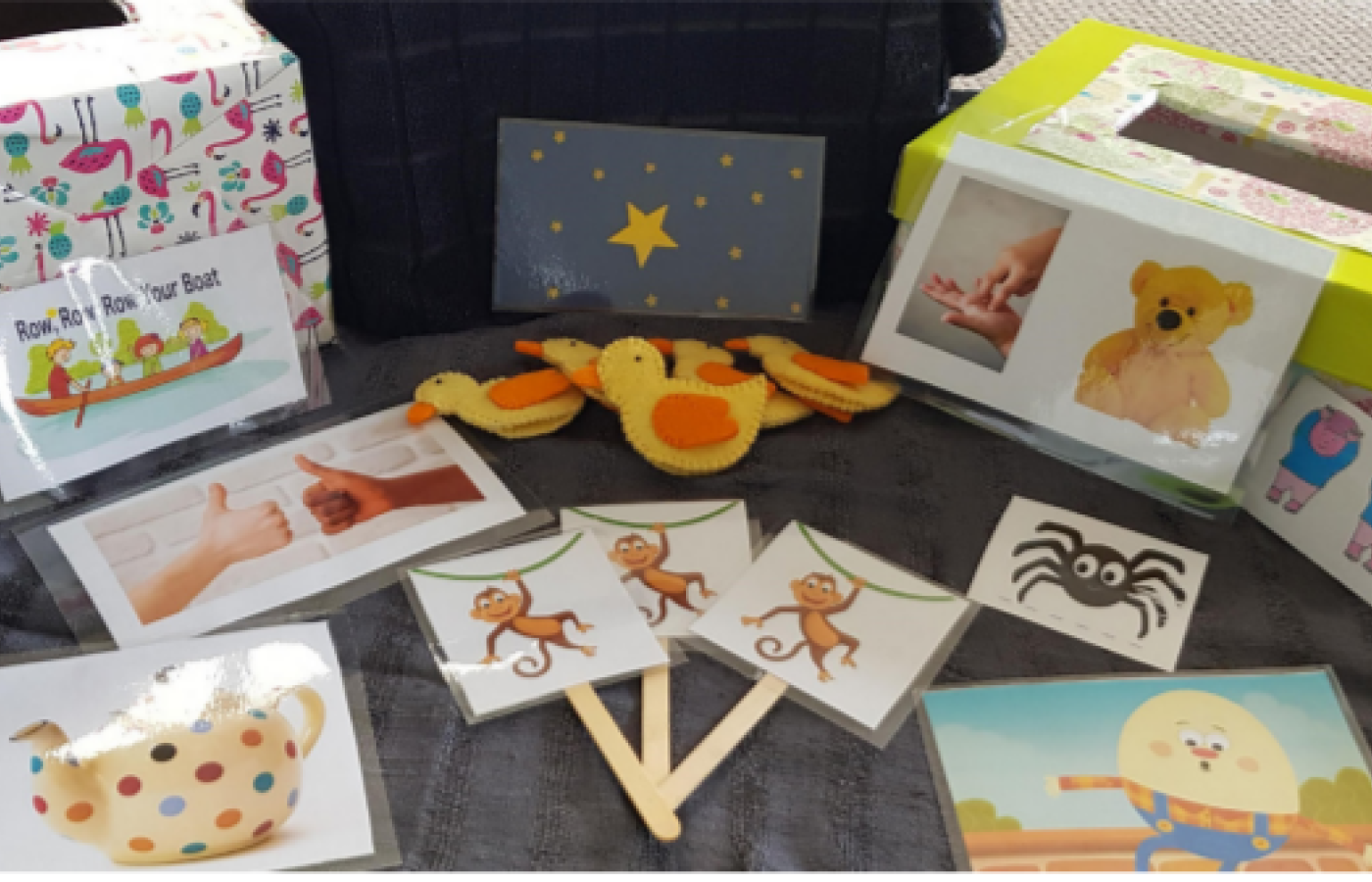Song in a box

Song in a box
Decorate a box and fill it with musical inspiration!
Materials Required
- Boxes (shoe box or large tissue box works well)
- Wrapping paper, contact paper or photos/pictures of choice to decorate the box
- Sticky tape
- Glue
- Scissors
- Images of nursery rhyme characters or different musical artists
- Different props. For example: puppets, dress-ups, instruments, pots and pans to use as drums
Songs and rhymes
Play experience profile
-
Ages:
-
Min Playtime15 - 30 Minutes
-
Skills
-
Energy LevelTransition
-
Messiness Rating
-
EYLF Outcomes
Play Experience Preparation
Make a list of the songs and rhymes you want to include in your box.Experience Steps
- Cut a hole in the top of the box, big enough to place your hand in to remove the objects.
- Decorate the box using wrapping paper, contact, photos or different craft materials.
- Select some of your child's favourite songs to include in your musical box. Search online or in books and magazines for images and lyrics, or have your child draw their own pictures.
- Add props like musical instruments, dress-ups or puppets to pull out and sing songs.
- TIP: Laminate your musical play crafts and they will last for a long time.

What to talk about, or questions to ask during the experience
- Which song will you pick out of the box next?
- Rhyme and rhythm
- Tempo - fast/slow - will we sing it fast or slow?
- Dynamics - soft/loud - will we sing loudly or softly?
- Which song is your favourite?
Build on this...
- Choose your baby’s favourite songs and continue to add elements/ characters. from the songs to the box
- Add props like puppets or instruments to the box.
- Let your child pull out the songs and then sing the songs together.
WHO guidelines for physical activity and sedentary behaviour
Provide evidence-based public health recommendations for children, adolescents and adults on physical activity.
Learn more
Provide evidence-based public health recommendations for children, adolescents and adults on physical activity. Learn more
Music and dancing promotes physical movement and wellbeing.
EYLF Outcomes
The Early Years Learning Framework has been designed for use by early childhood educators working in partnership with families, children’s first and most influential educators.
View PDF
The Early Years Learning Framework has been designed for use by early childhood educators working in partnership with families, children’s first and most influential educators. View PDF
- Children develop dispositions for learning such as curiosity, cooperation, confidence, creativity, commitment, enthusiasm, persistence, imagination and reflexivity
- Children express ideas and make meaning using a range of media
- Children develop a sense of belonging to groups and communities and an understanding of the reciprocal rights and responsibilities necessary for active community participation
EYLF Principle
Principle 5: Ongoing learning and reflective practice. Critical reflection involves closely examining all aspects of events and experiences from different perspectives.
EYLF Practice
Practice: Continuity of learning and transitions. Building on children’s prior and current experiences helps them to feel secure, confident and connected to familiar people, places, events and understandings.
Author:


